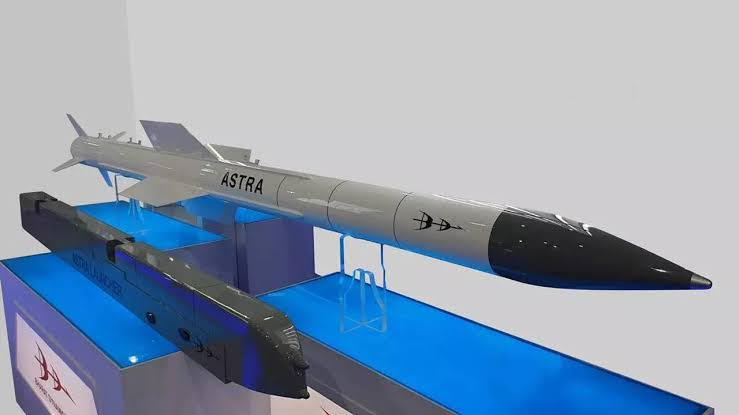Astra Series The Net Formidable Indian Missile System

After concentrating on the AGNI, AKASH and BRAHMOS Series of missiles now India is developing advanced variants of the ASTRA beyond visual range air-to-air missiles.
Astra 1 has already been cleared for serial production and induction into the IAF. This missile has a range of less than 100 km and is bit heavier for our Tejas Mk1. However the advanced version of Beyond visual range missile will be capable of striking targets at a range of 160km, when ready, and the Mk3 version will hit targets at almost 300km.
The Astra MK-2 is likely to be tested next year and Mk3 version in 2024 respectively. These two versions of ASTRA are among the Defence Research and Development Organisation’s (DRDO) key ongoing programmes.
The defence ministry last month signed a ₹2,971-crore contract with Bharat Dynamics Ltd (BDL) to equip the Indian Air Force and Indian Navy with Astra Mk-1 missiles and associated equipment, which has shown that India has now arrived on the world stage as a missile power. DRDO has already transferred technology to BDL for the production of the Astra Mk-1 and associated systems.
“Future air combat will be about detecting and striking targets at the farthest possible range. It will be the outcome of increase in the detection ranges of radars and the advent of longer-range missiles. It is important for India to develop missiles like Astra Mk-2 and Mk-3 to meet IAF’s requirements,” said Air Marshal Anil Chopra (Retd), director general, Centre for Airpower Studies.
China has developed the PL-15 beyond visual range air-to-air missile that can hit targets at around 200km, while the Meteor with a range of around 160 km is considered the best in its class in the western world, and the new Astra Mk2 variants will be as good and likely to be better. Long-range missiles allow fighter jets to shoot down hostile aircraft from a significant standoff range, staying out of the adversary’s air defence envelope.
The Astra MK-1 missile has been fully integrated with the Sukhoi-30 fighters and will now add to the capabilities of other combat planes including the Tejas Mk1A light combat aircraft. Also, the navy’s MiG-29K fighters, which presently operate from India’s aircraft carrier INS VIKRAMADITYA and soon from VIKRANT too, will be equipped with the Astra MK-1 missile.
Taking advantage of ongoing Russia Ukraine war, a few Western Suppliers had started thinking that now India would be at a disadvantage and come begging to them for advanced weapons They now will be highly disappointed. Soon India will not be importing any air to air missiles from anywhere. Current import from Russia / France will be just to build up enough stocks of existing missiles.
India has imposed a phased ban on the import of 310 different types of weapons and systems during the last two years to boost own the defence manufacturing sector.
These include lightweight tanks, naval utility helicopters, artillery guns, missiles, destroyers, ship-borne cruise missiles, light combat aircraft, light transport aircraft, long-range land-attack cruise missiles, basic trainer aircraft, multi-barrel rocket launchers, assault rifles, sniper rifles, specified types of helicopters, next-generation corvettes and airborne early warning and control (AEW&C) systems.
The 310 weapons and systems that have to be developed in the country were notified in three separate positive indigenisation lists published by the defence ministry in August 2020, May 2021 and April 2020.
Since the notification of the first and second lists, contracts for 31 projects worth ₹53,839 crore have been signed by the defence services as of April 2022, according to defence ministry data.
Also, acceptance of necessity (AoN) for 83 projects worth ₹1,77,258 crore was accorded by April 2022, and cases worth ₹2,93,741 crore will be taken up in the next five to seven years.
The domestic industry is likely to receive orders worth ₹2,10,000 crore in the next five years as a result of the third list, according to the defence ministry’s projections.




